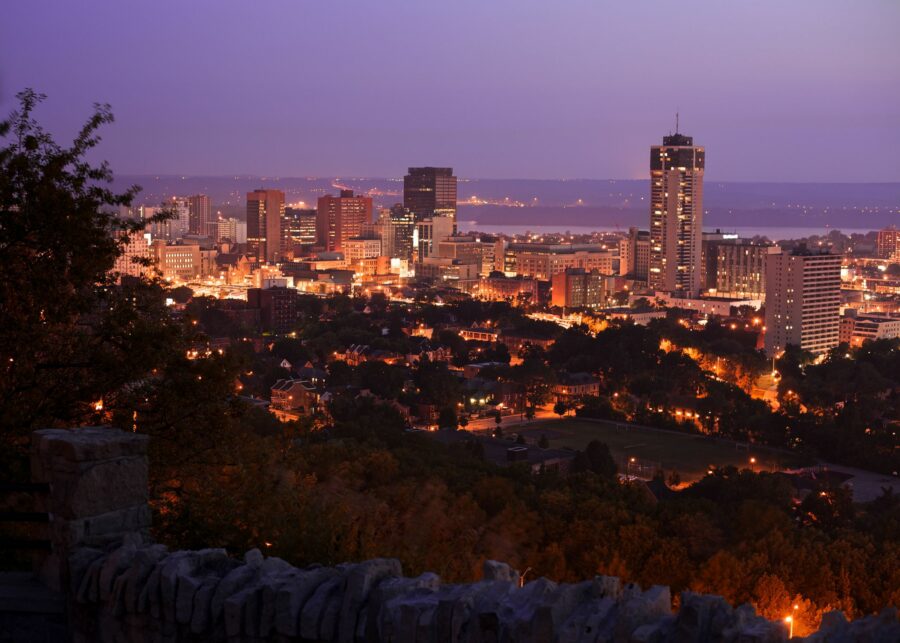
One-Way or No Way | December 2012
- Dev Team
- 29 Jan 2015
I have been a resident of Hamilton for 50 years. I worked downtown and attended McMaster University. I have witnessed the changes taking place in Hamilton over those years. I am concerned with the issue of Hamilton’s one way streets because I value the serenity of Hamilton. Hamilton is surrounded by the escarpment, the lake, Princess Point and small towns each having their own identity. It is both a mosaic and a homogenous community that unites during crises. I have been following the two-way to one-way street conversion (and their reversal) for many years. The concept of one-way streets was born in the mid 1950’s. Its purpose was to improve traffic movement through the downtown and along main streets. There are several reasons given by decision makers and others to maintain the one-way system which they see as a component of modern city design. The main reason for continuing one-way streets is that to revert to two-way would slow traffic resulting in longer commutes to the workplace and a difficulty in moving people and goods. The chamber of commerce and political decision makers may still
cling to one-way streets in Hamilton, but the most taxpayers are in support of two way traffic including news media. There are also many incidences of persons who were involved in the decision to institute one way streets and who are now advocating conversion back to two-way.
Two-way traffic not only improves the quality of life, it helps small business, which form the majority of the Canadian
economy. Prior to the early 1960’s, the downtown open air market and the small businesses on Barton Street and Ottawa Street were financially successful. Now those businesses that are left they, struggle. At one time, China and India were considered underdeveloped countries. Today they are outpacing the economic growth of western countries. Why? It is because of the ease of movement between rural and urban areas.
In December 1961, the Hamilton City Council designated the “North End” of Hamilton as a redevelopment area and shortly redevelopment plans were announced. In the spring of 1962, a thorough research study called “The consequences of relocation: A study of Hamilton’s North End” began to determine causes and effects of urban renewal.
A final report came in 1972. It concluded that the relocation had impacts on families which included social breakdowns.
According to the research report during this period, print media played a greater role in communicating with residents than the City or other media. The above preamble provides an historical background for comparison purposes in the hopes that the 1960 implementation is not repeated. That redevelopment created huge social sub-divisions and resulted in the relocation of
many Hamiltonians to the suburbs. In a search for new and fresh experiences, the sense of community was sacrificed and a social class system was created.
A combination of highly skilled traffic engineers and planners will be able to achieve balanced goals. There is no need to be circulating a request for comments and comparisons to other municipalities. Each municipality has its own demographical and sociological attributes, and those attributes play a major role in its view of itself. Research has to be independent and conducive to a particular project and to a particular municipality. The further reversal from one way traffic to two- way traffic in some main areas of the City has been discussed and it was concluded that it is too arduous and too expensive to accomplish. It cited as examples are Cannon Street and Upper James. Where would we find the money? We could start by reducing the city’s salaries, wages and benefits which has increased 79% since 2001, as well as by reducing the cost of contractual services which have increased 130% since 2001. The City of Hamilton is over spending in those areas. City council is concerned with City core developments and enhancements. At present, the core appears to be alive only weekdays because offices are open. The only way to bring back human movement in the core is to consider reintroducing two way traffic. Two way streets would help
bring back the open concepts enjoyed in the early 1960’s on both weekdays and weekends. Two- way traffic is Local epithet.
I hope City Council rescinds its decision and reinstates two-way traffic. Council members are elected to listen to their
respective constituents democratically as a plurality rather exercising their vote singularly.
Shekar Chandrasekhar
Retired civic employee
Comments 0
There are no comments

Add comment